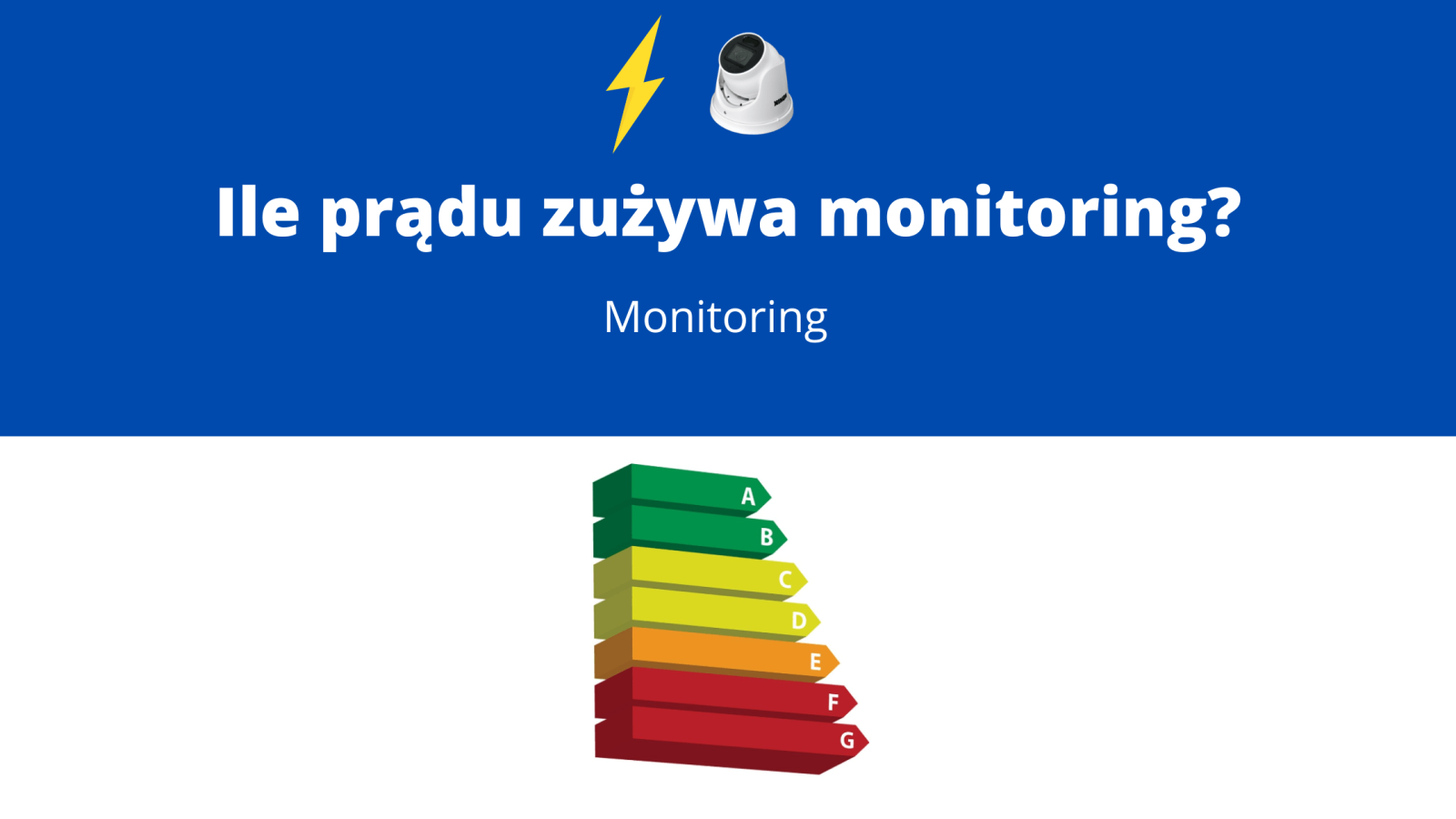
Ile prądu zużywa monitoring?
Średni roczny koszt zużycia prądu dla monitoringu domowego przy 4 kamerach to kwota nie przekraczająca 230 zł. Dla małych i średnich firm jest to około 900 zł netto przy 16 kamerach.
Takie wyniki otrzymałem analizując dwie przykładowe instalacje systemu monitoringu.
W tym wpisie na blogu postaram się wytłumaczyć sposób obliczania zużycia energii elektrycznej przez system monitoring IP.
Ile prądu pobierają kamery monitoringu?
Ilość prądu pobierana przez kamerę jest uzależniona od dwóch najważniejszych czynników:
- zasięgu oświetlenia nocnego
- analogowa czy IP
- czy posiada wbudowany motozoom
Ten ostatni parametr wpływa jedynie na wartość maksymalnego poboru mocy i nie ma znaczenia dla rachunków za prąd. Motozoom jest uruchamiany tylko zdalnie i chwilowo w celu regulacji kątów widzenia. Z kolei kamery IP mają większe zapotrzebowanie na prąd ze względu na bardziej zaawansowaną elektronikę zainstalowaną w samej kamerze. Różnice nie są jednak zbyt duże. Największy wpływ na pobór mocy przez kamerę ma oświetlenie nocne
Jeżeli np. kamera o zasięgu podczerwieni 30 m pobiera prąd o wartości 420 mA(5W) to ta sama kamera z podczerwienią o zasięgu 60 m pobiera prąd o wartości 600 mA(7,2W).
Oczywiście te wartości również mogą się różnić w zależności od modelu i producenta.
Ile prądu pobiera kamera IP?
Jedna kamera IP o zasięgu oświetlenia nocnego IR na poziomie 30 m pobiera w ciągu doby około 0,13 kWh.
Kamera IP o zasięgu oświetlenia nocnego IR na poziomie 60 m pobiera w ciągu doby około 0,17 kWh.
Open this in UX Builder to add and edit content
Ile prądu pobiera rejestrator?
Rejestrator IP do obsługi 4 kamer z dyskiem HDD 2 TB pobiera w ciągu doby około 0,40 kWh.
Rejestrator IP do obsługi 16 kamer z dyskiem HDD 8TB pobiera w ciągu doby około 0,60 kWh.
Pobór mocy nieobciążonego switcha w trybie czuwania to 0,1 kWh.
Przykład obliczenia kosztów monitoringu domowego składającego się z 4 kamer.
Mnożąc energię pobieraną przez jedną kamerę IP do użytku domowego 0,13 kWh i mnożąc razy 4 to wynik wynosi 0,52 kWh.
Dodając do tego pobór rejestratora IP 0,40 kWh i switcha 0,1 kWh.
To wynik dziennego zapotrzebowania na energię elektryczną wynosi 0,93 kWh.
Jeśli tę wartość pomnożymy przez 365 dni to otrzymamy wynik 339,45 kWh rocznie.
Przy założeniu że w gospodarstwie domowym nie przekroczymy miesięcznie 2000 kWh średnia cena za 1 kWh wynosi 0,66 zł, w wyniku pomnożenia tej stawki przez pobór prądu zestawu otrzymujemy wartość 224 zł rocznie za energię pobraną przez zestaw monitoringu składający się z rejestratora i czterech kamer.
Przykład obliczenia kosztów monitoringu dla małej lub średniej firmy składającego się z 16 kamer.
Założyłem że w takim obiekcie zamontujemy 16 kamer IP w połączeniu z rejestratorem i dwoma switchami POE.
Kamery o zasięgu IR 60m 0,17 kWh X 16= 2,72 kWh na dobę.
Switch POE 0,1 kWh X 2 =0,2 kWh.
Sumując 2,72 + 0,6 + 0,2 = 3,34 kWh i mnożąc to przez 365 dni w roku otrzymujemy 1219,1 kWh
rocznie.
Cena w przypadku małych i średnich firm to 0,75 zł netto za 1 kWh.
1219,1 x 0,75 = 914,3 zł netto plus 5% Vat.
W tych przykładach widać że najwięcej prądu pobierają same kamery a wartość ta w dużym stopniu uzależniona jest od mocy oświetlenia nocnego.
Można założyć że jest to dodatkowy koszt oświetlenia, gdyż takie kamery muszą świecić całą noc.

